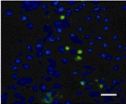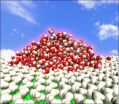(Press-News.org) A team of researchers at the Neuroscience Institute at Georgia State University has discovered that hidden differences in the properties of neural circuits can account for whether animals are behaviorally susceptible to brain injury. These results could have implications for the treatment of brain trauma.
People vary in their responses to stroke and trauma, which impedes the ability of physicians to predict patient outcomes. Damage to the brain and nervous system can lead to severe disabilities, including epilepsy and cognitive impairment.
If doctors could predict outcomes with greater accuracy, patients might benefit from more tailored treatments. Unfortunately, the complexity of the human brain hinders efforts to explain why similar brain damage can affect each person differently.
The researchers used a unique research animal, a sea slug called Tritonia diomedea, to study this question. This animal was used because unlike humans, it has a small number of neurons and its behavior is simple. Despite this simplicity, the animals varied in how neurons were connected.
Under normal conditions, this variability did not matter to the animals' behavior, but when a major pathway in the brain was severed, some of the animals showed little behavioral deficit, while others could not produce the behavior being studied. Remarkably, the researchers could artificially rewire the neural circuit using computer-generated connections and make animals susceptible or invulnerable to the injury.
"This study is important in light of the current Obama BRAIN initiative, which seeks to map all of the connections in the human brain," said Georgia State professor, Paul Katz, who led the research project. "it shows that even in a simple brain, small differences that have no effect under normal conditions, have major implications when the nervous system is challenged by injury or trauma."
INFORMATION:
Results of this study were published in the most recent edition of the journal eLife. The lead author on the study, Dr. Akira Sakurai, made this discovery in the course of doing basic research. He was assisted by Ph.D. student Arianna Tamvacakis from Dr. Katz's lab.
The project was funded in part by grants from the National Science Foundation and was initiated by a seed grant from the Brains and Behavior Program in the Neuroscience Institute.
The March of Dimes Foundation has also recently awarded Dr. Katz a three-year, $330,000 grant for the project.
It is hoped results of this work will provide basic information about how all nervous systems function.
Full article: Sakurai A, Tamvacakis AN, Katz PS. (2014). Hidden synaptic differences in a neural circuit underlie differential behavioral susceptibility to a neural injury, eLife 10.7554/eLife.02598. http://elifesciences.org/content/early/2014/06/11/eLife.02598
For more information on Dr. Katz and the research being conducted in his laboratory, visit http://tinyurl.com/katzlab.
Hidden variations in neuronal networks may explain traumatic brain injury outcomes
2014-07-15
ELSE PRESS RELEASES FROM THIS DATE:
To accept or not accept -- Patients want a say in liver transplant decisions
2014-07-15
A novel study reveals that more than half of liver transplant patients want to be informed of donor risk at the time a liver is offered for transplantation. Nearly 80% of those patients want to be involved in the decision of whether or not to accept the organ according to findings published in Liver Transplantation, a journal of the American Association for the Study of Liver Diseases and the International Liver Transplantation Society.
There is a shortage of available donor organs, which leaves many on the liver transplant waiting list. Currently, there are more than ...
Cardiac patients underserved globally due to lack of rehab programs: York University researcher
2014-07-15
TORONTO, July 15, 2014 — Rehabilitation programs must become an integral part of cardiac care to significantly reduce the burden of living with heart disease, one of the most common chronic diseases and causes of death globally, according to York University Professor Sherry Grace.
"Cardiac rehabilitation is a cost-effective program offering heart patients exercise, education and risk reduction," says Grace, noting that participation results in 25 per cent less death, lower re-hospitalization rates and better quality of life.
Despite these benefits, cardiac rehabilitation ...
Neuropeptide Y protects cerebral cortical neurons
2014-07-15
Neuropeptide Y exhibits neuroprotective effects. Whether the neuroprotective effects are mediated by the pathways including regulating the immunological activity of reactive microglia and reducing cytokines remains unclear. Prof. Wenqing Zhao, Graduate School, Heibei Medical University, China and his team confirmed that neuropeptide Y prevented excessive production of interleukin-1β and tumor necrosis factor-α by inhibiting microglial reactivity, reduced N-methyl-D-aspartate current in rat cortical neurons, preventing excitotoxicity, and thereby protecting neurons. ...
Hippocampal neuron-related factor expression and neuronal injury after TBI
2014-07-15
Traumatic brain injury (TBI) causes gene expression changes in different brain regions. Cyclooxygenase-2, glutamate receptor-2, and platelet activating factor receptor expression levels are related to the occurrence and development of TBI. However, the precise relationship between the expression levels of these three factors and neuronal injury after TBI remains poorly understood. Zhiqiang Li, Inner Mongolia Corps Hospital, Chinese People's Armed Police Forces, China performed a study and showed that sequential expression of cyclooxygenase-2, glutamate receptor-2, and platelet ...
Signaling pathway for ginsenoside Rb1 promoting hippocampal neuronal neurite outgrowth
2014-07-15
The main pathological changes of Alzheimer's disease (AD) include amyloid-beta protein-induced hippocampal neuronal injury and neurite outgrowth impairment. Phosphatidylinositol 3-kinase (PI3K)/Akt pathway and mitogen-activated protein kinase (MAPK) pathway are the important signaling pathways respectively responsible for regulating synaptic plasticity and neuronal survival. In view of the fact that ginsenoside Rb1 exhibits anti-aging and anti-dementia effects, Prof. Qionglan Yuan and her team, Department of Anatomy & Neurobiology, Tongji University School of Medicine, ...
The ADC does not reflect cytotoxic edema on the uninjured side after TBI
2014-07-15
It is currently difficult to treat traumatic brain injury (TBI) in the clinic. There are abundant neural network connections and humoral regulation mechanisms between the cerebral hemispheres. Brain tissue on the uninjured side after TBI may also undergo abnormal changes, but these changes remain poorly understood. Hong Lu and her team, Affiliated Haikou Hospital, Xiangya School of Medicine, Central South University, in China performed a study to investigate whether apparent diffusion coefficient (ADC) measurements can reflect cytotoxic edema on the uninjured side using ...
Protective effect of α-synuclein knockdown on dopaminergic neurons
2014-07-15
The over-expression of α-synuclein is a major factor in the death of dopaminergic neurons in a methamphetamine-induced model of Parkinson's disease (PD). Dr. Huijun Wang, School of Basic Medical Sciences, Southern Medical University, China and his team injected α-synuclein-shRNA lentivirus stereotaxically into the right striatum of experimental rats to inhibit α-synuclein mRNA and protein expression. Results showed that after α-synuclein knockdown, the depression manifestations of PD rats were reduced, striatal dopamine and tyrosine hydroxylase levels ...
Shanghai scientists challenge classical phenomenon that water always completely wets water
2014-07-15
The molecular scale behavior of water at a solid/liquid interface holds fundamental significance in a diverse set of technical and scientific contexts, ranging from the efficiency of oil mining to the activity of biological molecules. Recently, it has become recognized that both the physical interactions and the surface morphology have significant impact on the behavior of interfacial water, including the water structures and wetting properties of the surface.
In a new review, Chunlei Wang, Yizhou Yang and Haiping Fang of the Shanghai Institute of Applied Physics report ...
SWI assesses signal strength in different brain regions after acute hemorrhagic anemia
2014-07-15
Acute hemorrhagic anemia can decrease blood flow and oxygen supply to brain, and affect its physiological function. Detecting changes in brain function in patients with acute hemorrhagic anemia is helpful for preventing neurological complications and evaluating therapeutic effects. Susceptibility-weighted imaging (SWI) imaging is a novel, non-invasive method for detecting changes in cerebral oxygen levels that may provide more detailed information regarding cerebral blood flow in patients with hemorrhage. Dr. Jun Xia, Second People's Hospital of Shenzhen City, First Affiliated ...
Taking B vitamins won't prevent Alzheimer's disease
2014-07-15
Taking B vitamins doesn't slow mental decline as we age, nor is it likely to prevent Alzheimer's disease, conclude Oxford University researchers who have assembled all the best clinical trial data involving 22,000 people to offer a final answer on this debate.
High levels in the blood of a compound called homocysteine have been found in people with Alzheimer's disease, and people with higher levels of homocysteine have been shown to be at increased risk of Alzheimer's disease. Taking folic acid and vitamin B-12 are known to lower levels of homocysteine in the body, so ...







